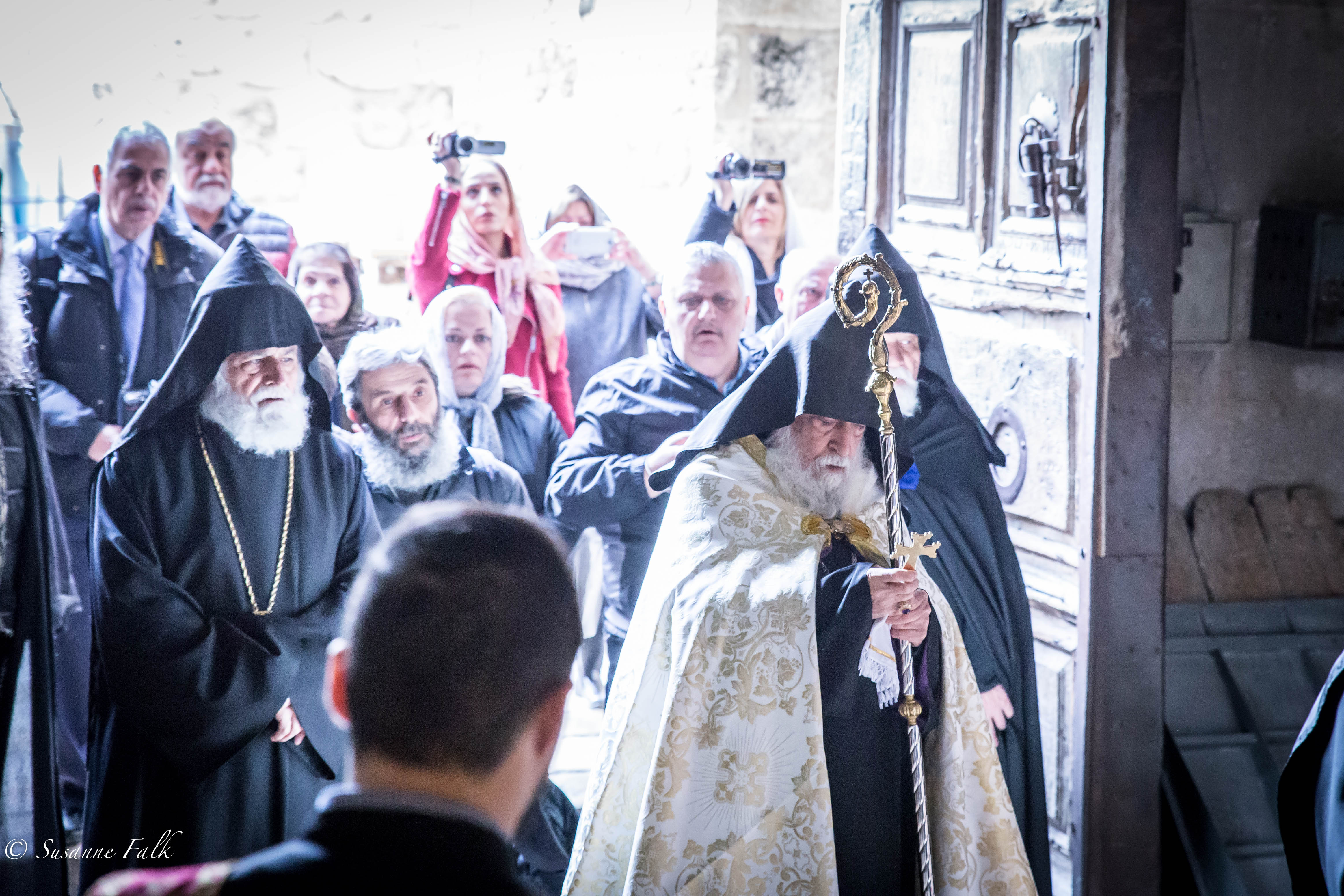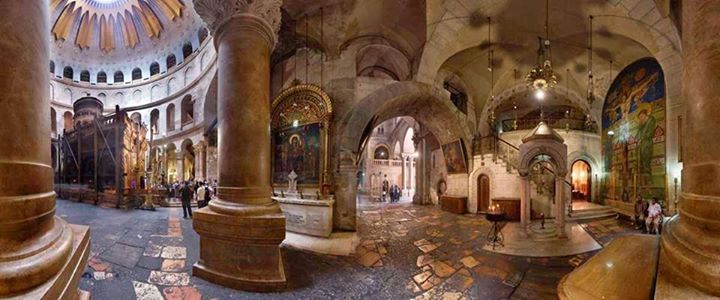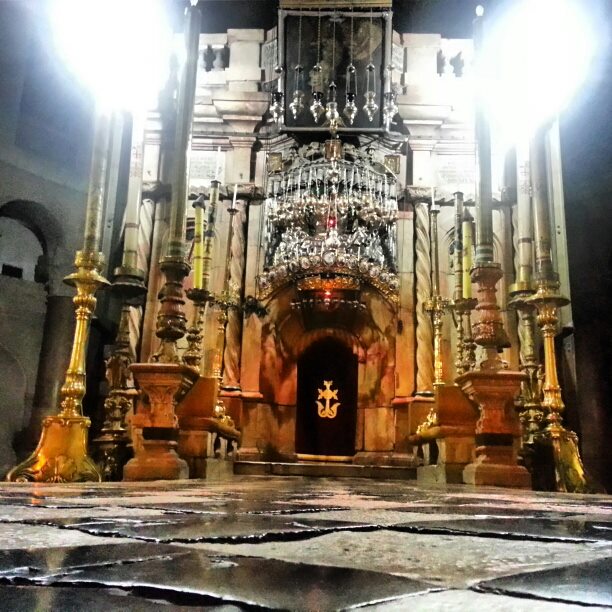Holy Sepulchre

Within the Church is the hill of Golgotha, where our Lord was crucified, as well as the grave in which He was buried and from which He arose from the dead.
Actually it is more correct to call this church the Church of the Resurrection, as it is the most important church for our Christian faith.
Already from the 4th century A.D. the place was the major site for Christian pilgrimage. St. Helena, the mother of Emperor Constantine the Great visited the Holy Land around 327, and found the True Cross on which Christ was crucified. Already before her visit, Emperor Constantine had ordered the bishop of Jerusalem to destroy pagan temples, which were built over Christian Holy places. A magnificent building was erected on Golgotha, and the Church was inaugurated in 335 A.D.

Although the Church was damaged, it was rebuilt and repaired during the centuries, and remains until our days a place of worship for Christians from all over the world.
When you enter the Church, the first thing you see is the stone upon which Christ was anointed, the Stone of Unction. From the gospel of St. John we know that Joseph of Arimathea and Nicodemus took myrrh and aloe for anointing, and they buried our Lord.
From there turning to the left, you see the large mosaic on the wall, where Virgin Mary fainted, when she saw Jesus Christ nailed to the cross.
While ascending the stairs, many engraved crosses from pilgrims are visible. The upper part is consecrated as “Holy Calvary. At the right side, there is the Chapel of the Intercession of the Blessed Virgin. Notice the beautiful mosaic work at the floors.
Back down, standing near the mosaic of the fainting of Virgin Mary, you can see a large round space, above which a large dome of the Church is situated.

Just next to this, there is a stone staircase, going down, leading to the Church of St. Gregory the Illuminator. This part is the oldest part of the Church of the Holy Sepulcher, not damaged by the great fire in 1808. Stone cells were discovered in the North wall of the Church, proof of first century Christian pilgrims, who already recognized this location as the Calvary. At the right hand, there are stairs going even more down, to the cave of the Holy Cross- the location where St. Helena discovered the Cross of Christ.

January 2021: The restrictions because of Corona are still applicable.
The Armenian Orthodox Church has Services in the Church of the Holy Sepulchre:
Every day Holy Mass early morning,
Friday, Saturday and Sunday afternoon: processions at 17.15 h
on Sundays: another Holy Mass (apart from the early morning Holy Mass) every other week.
